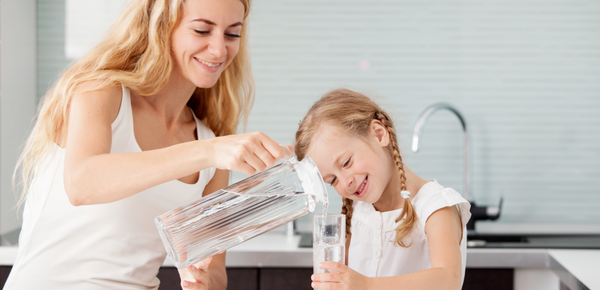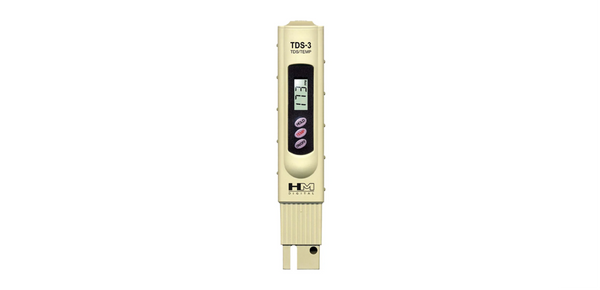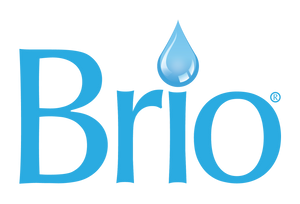Drinking clean water is one of the most vital aspects of maintaining a healthy lifestyle. But if the water you’re consuming isn’t clean, all the natural benefits of H20 go right down the drain (no pun intended!).
Many of us, however, may not realize that we can take matters into our own hands by testing our water right at home. Here, we lift the lid on how to test your water at home, ensuring you have the information needed to safeguard your water quality and make informed decisions for your family’s health.

Just how many contaminants are in my water?
For many Americans, drinking water straight from the tap is the go-to option for hydration. But did you know the water from your faucet may contain many harmful contaminants? Out of a sample of 120 American homes, 118 of them had water with traces of arsenic, lead, and other toxic chemicals that negatively impact our health. Find out more about the top contaminants found in US tap water.
Why regular water quality testing is crucial
Testing water quality helps identify potential contaminants and ensures your water meets health and safety standards. Regular testing is essential because water quality can change over time due to various factors such as environmental pollution, aging infrastructure, and natural processes. By testing regularly, we can catch any issues early and take necessary actions to address them.
What are the risks associated with poor water quality?
Poor water quality can pose serious health risks, including gastrointestinal illnesses, skin problems, and even long-term health effects. Testing your water helps identify contaminants that could harm your health.
Water contamination also has significant environmental impacts. Testing water at home allows us to contribute to community efforts in monitoring and addressing water quality issues.
Why is my tap water contaminated?

Since the passage of the Clean Water Act in 1972, many water-monitoring issues have arisen. There could be contamination due to:
- extreme weather events
- industrial activities
- agricultural runoff
- wastewater discharge
- natural occurrences like groundwater contamination
- deteriorating infrastructure
- inadequate treatment at water plants, which aren’t set up to remove more modern contaminants, such as forever chemicals.
How to test your drinking water at home
Testing your water at home is easier than you might think! We’ve compiled a simple water test you can easily conduct yourself to determine if your home’s water source hosts bacteria, chemicals, or other unsafe elements.
#1 Water quality testing: look
If you notice a distinctly odd physical appearance such as a milky or cloudy-white film, it’s possible your drinking water contains total dissolved solids (TDS).
TDS are small particles that make their way into your tap water (and eventually your cup). They can include lead and arsenic. Ignore cloudy drinking water for too long and the TDS in your tap water can lead to health problems, including diabetes and neurological damage.

If you live in a region of the country where your water source is a local lake, it’s important to keep an eye out for problems. A lake or pond with a thick, paint-like layer covering the surface may be a sign of unsafe water. That green slick might be toxic algae, or cyanobacteria, a dangerous bacterium that can make you very ill. Symptoms of exposure include nausea, vomiting, swollen lips, and muscle weakness.
#2 Water quality testing: smell
Next, test the smell of your drinking water. Not all contaminants are easily identifiable with the naked eye and, if we aren’t careful about spotting them early, they create bigger health risks for you and your family in the future.
If you encounter fishy, oily, bitter, or rotten egg-smelling water, this could point to signs of water contamination. The rotten egg smell can be caused by the presence of bacteria in your water, which can lead to illness.
Other funky smells in your water may be caused by unhealthy levels of chemicals present in tap water, such as chlorine.
#3 Water quality testing: touch
The next water testing you’ll want to attempt is identifying contaminants by touch. Water that feels slimy or leaves your hands coarse and rough could be another indicator of problematic drinking water. This same water may also leave water spots on your dishes after running the dishwasher. These are all signs of hard water.
Hard water is water that has high levels of calcium and magnesium. Although this type of water is not overly harmful to consume, hard water can damage your home’s pipes and appliances like washing machines and dishwashers, which can be costly to repair down the road.
#4 Water quality testing: taste

If your water supply has passed all these water test steps, you can now test your water quality for impure tastes. Water that has a metallic taste may present unhealthy levels of metals such as manganese, lead, zinc, and copper. Lead, for example, can slip off as particles from the pipes transporting your water and can cause lead poisoning.
How can I test water quality: other options
Want a second opinion? Try a water quality meter. This valuable tool for testing water at home works by measuring parameters such as pH, conductivity, and dissolved oxygen to assess water quality accurately.

Brio’s Total Dissolved Solids (TDS) Meter Water Quality Tester is ideal because:
- It’s easy to use: simply turn on, place in water, and read results.
- It’s versatile: ideal for all residential and commercial water purification applications, it tests water purity and features a built-in digital temperature meter.
- It’s long lasting: durably designed with high chemical resistance to ensure it will last years.
- Its auto-off function turns off after 10 minutes to ensure long battery life.
How to test water quality with Brio’s water quality testing kit
- Remove the protective cap.
- Turn the TDS meter on.
- Immerse the meter into the water up to the maximum immersion level. Please don’t drop the entire TDS meter in the water!
- Wait for the reading to be stable.
- The value of TDS will be fixed on the display between 10 and 30 seconds. Hold down the “hold” key to lock the value.
- Wipe the remaining water from the pen with a tissue after use and replace the pen cap.
Poor water quality: what are your options?
The Environmental Protection Agency recommends that tap water remains under 500 ppm. If your water test reveals a higher level than that, don’t panic! There’s no need to drop thousands of dollars on plastic bottles to achieve perfectly clean water. Brio offers a range of water filtration solutions, from RO bottleless coolers to reverse osmosis undersink filtration systems. Explore your options to find the best solution for your needs.

Testing your water at home is a simple yet powerful way to protect your health and ensure the safety of your family’s drinking water. By understanding the importance of water quality testing, learning how to test your water at home, and taking action based on your findings, you can empower yourself to make informed decisions about your water supply. Clean water is essential for life, and it’s up to each of us to do our part in preserving and protecting it.




